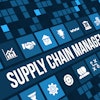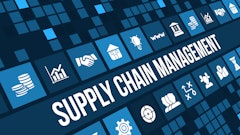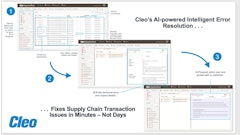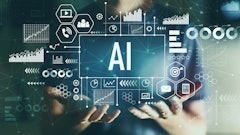
Supply chain disruptions and looming tariff variabilities are putting increasing pressure on organizations as they adapt to a dynamic and volatile supply chain environment quickly. Recent findings from The 2025 Industry Report on Cost, Schedule, and Risk underscore this reality, with more than half of manufacturing professionals polled citing supply chain disruptions as the most significant challenge faced in their daily operations and long-term strategic planning.
Organizations relying on static cost models and outdated supplier quotes will find themselves blindsided by price hikes and shifting global trade policies. These traditional approaches leave businesses vulnerable to unexpected costs and operational inefficiencies, often resulting in reactive measures such as passing costs onto customers, absorbing margin hits, or scrambling to find alternative suppliers. Moreover, these short-term responses provide limited relief and fail to address the underlying issues.
While many organizations have been slow to adopt artificial intelligence (AI) and machine learning (ML) initiatives, the present state of things is quickly shifting mindsets to understand the impact of predictive insights, real-time scenario modeling, and dynamic cost management capabilities. Organizations that integrate AI-driven analytics into their workflows can transform raw data into strategic guidance for cost engineering, risk assessment, and digital project planning. These technologies are no longer an experiment – they are the defining competitive advantage, and organizations that leverage AI now will help lead their respective markets. Organizations can turn these and other unpredictable challenges into strategic opportunities by integrating AI and ML into cost estimation, supply chain optimization, and tariff scenario planning. As tariffs shift pricing, sourcing, production, and long-term planning, AI and ML empower organizations to develop agile, resilient supply chains that anticipate and adapt to evolving market conditions.
Breaking down the costs and challenges
Tariffs can upend even the most reliable cost models, exposing weaknesses in traditional estimation practices that rely too heavily on static assumptions and outdated supplier quotes. When organizations lack visibility into the breakdown of costs for materials, labor, overhead, and margins shift due to evolving external factors, they expose themselves to financial risk.
Moreover, organizations can often make rushed decisions without detailed should-cost analysis, such as switching suppliers in response to tariff changes, only to discover that their cost position remains compromised. Companies typically resort to one of three approaches in response to pricing disruptions. Some pass costs onto customers through price increases, which may protect short-term margins but risk alienating customers and reducing long-term competitiveness. Others absorb the costs, eroding profitability and potentially hindering future growth and investments. Alternatively, they may seek new suppliers in regions with lower tariffs, which can take significant time and often result in higher overall costs.
Proactive cost engineering
To stay ahead of these challenges, organizations need a more proactive approach. Companies leveraging AI and ML can move beyond reactive measures, using real-time data to dynamically adjust cost models, stress-test budgets, and conduct detailed cost breakdowns that empower better decision-making.
Dynamic cost modeling is essential for keeping cost estimates aligned with current market conditions. AI and ML continuously update cost models to reflect changes in tariffs, supply chain disruptions, and market fluctuations, alerting organizations to market changes and allowing them to pivot before disruptions escalate. Performing robust sensitivity analysis is equally critical, allowing organizations to stress-test budgets against a range of possible scenarios and providing a clear understanding of how different tariff outcomes will impact margins, sourcing decisions, and pricing strategies. Through scenario modeling, companies can minimize risk and optimize financial outcomes.
Analyzed by AI, granular should-cost analysis ensures supplier quotes are broken down into their core components: materials, labor, overhead, and margins. This level of insight enables procurement teams to negotiate better terms and assess whether switching suppliers is the most cost-effective move. A comprehensive view of costs gives organizations a stronger position to make informed decisions based on reliable insights.
Optimizing supply chain efficiencies with AI and ML
AI and ML provide organizations with the tools to optimize supply chain efficiency and mitigate volatility. These technologies synthesize historical knowledge with real-time insights, allowing companies to integrate data with predictive analytics to anticipate and respond to uncertainties.
Dynamic cost, schedule, and resource updates ensure that cost models remain agile and aligned with changing market conditions. By continuously refining these models, AI and ML help organizations stay ahead of market shifts and maintain control over their cost structures. Scenario planning and forecasting capabilities make this proactive approach even more effective. AI and ML facilitate real-time scenario analysis to simulate various tariff outcomes, helping organizations determine whether absorbing costs, passing them to customers, or renegotiating supplier terms is the best course of action.
AI and ML also enhance supply chain visibility by integrating seamlessly with enterprise systems such as enterprise resource planning (ERP), product lifecycle management (PLM), and project management platforms. This integration ensures synchronized cost, schedule, and resource planning, supporting Industry 4.0 initiatives and enabling real-time decision-making. AI-powered insights also help organizations make more strategic supplier choices. They can help assess supplier performance, analyze cost breakdowns, and empower procurement teams to make data-driven decisions so organizations can engage with the suppliers that offer the best balance of cost efficiency and quality.
Predictive analytics can also help strengthen supply chain resilience by identifying potential disruptions and inefficiencies before they escalate. This foresight enables companies to pivot proactively and mitigate risks impacting operations. Additionally, improved resource management allows manufacturers to analyze historical trends and real-time data to dynamically adjust production strategies, ensuring cost visibility across the supply chain.
Ensuring competitive advantage for the long haul
AI and ML aren’t magic bullets, but when applied thoughtfully, they amplify business goals and strengthen long-term competitiveness. Proactive cost engineering, dynamic modeling, and continuous optimization enable organizations to do more than react to market volatility – they transform uncertainty into a competitive advantage.
When AI and ML initiatives align with business goals, organizations are better prepared to anticipate and navigate challenges. Instead of just tracking industry shifts, it’s essential to analyze them to uncover meaningful trends and tangible, measurable outcomes. Companies that integrate AI and ML effectively, leveraging them to predict disruptions, optimize supply chains, and maintain cost efficiency, will be equipped for long-term success and growth.



















